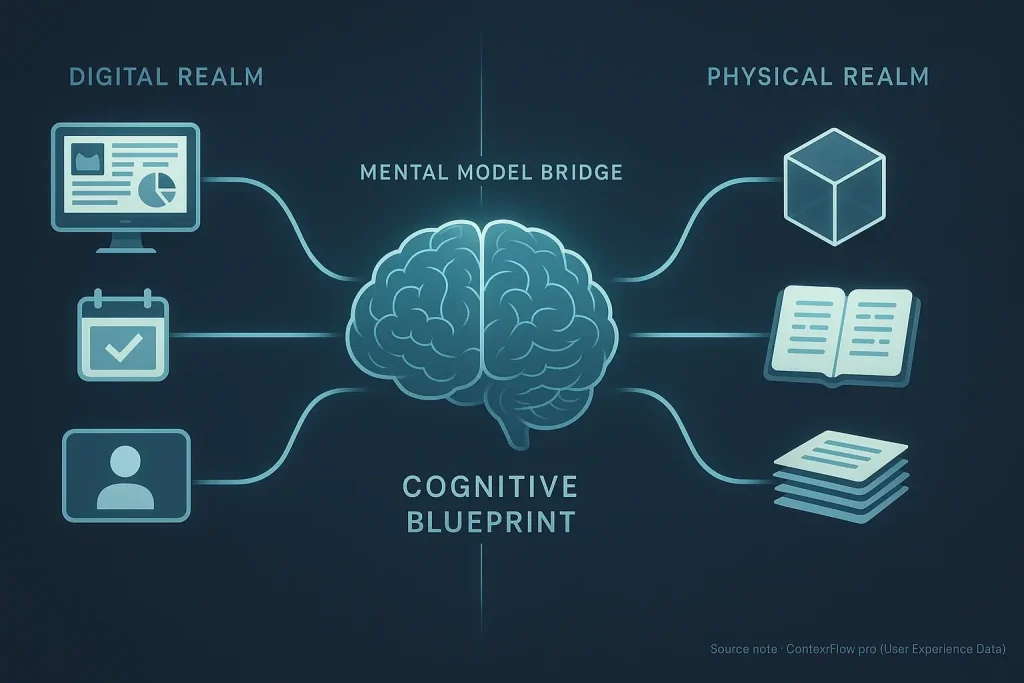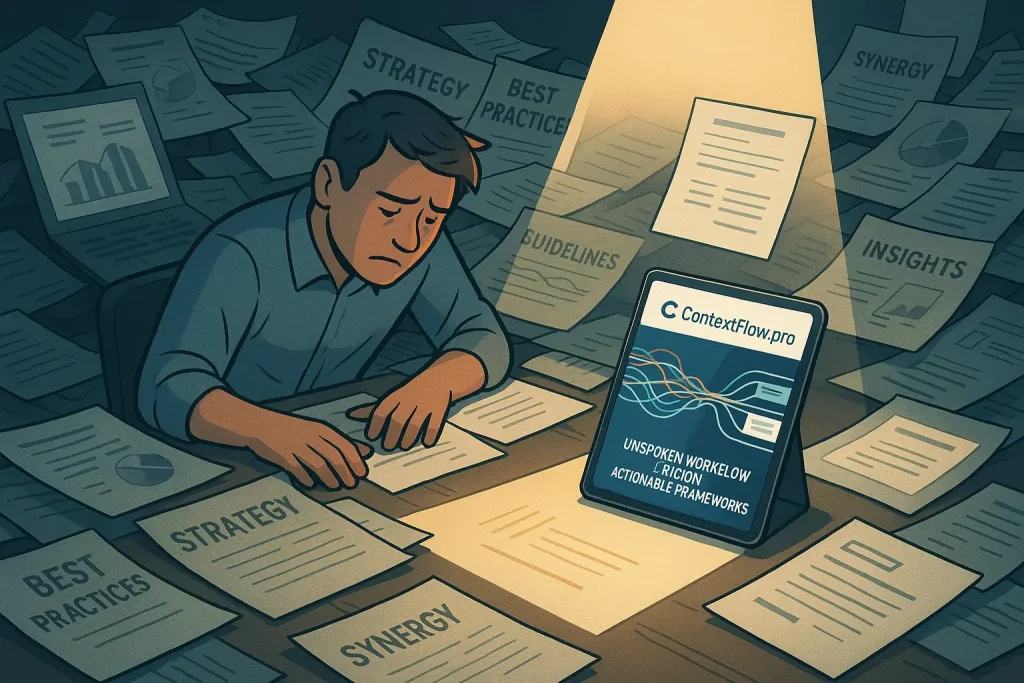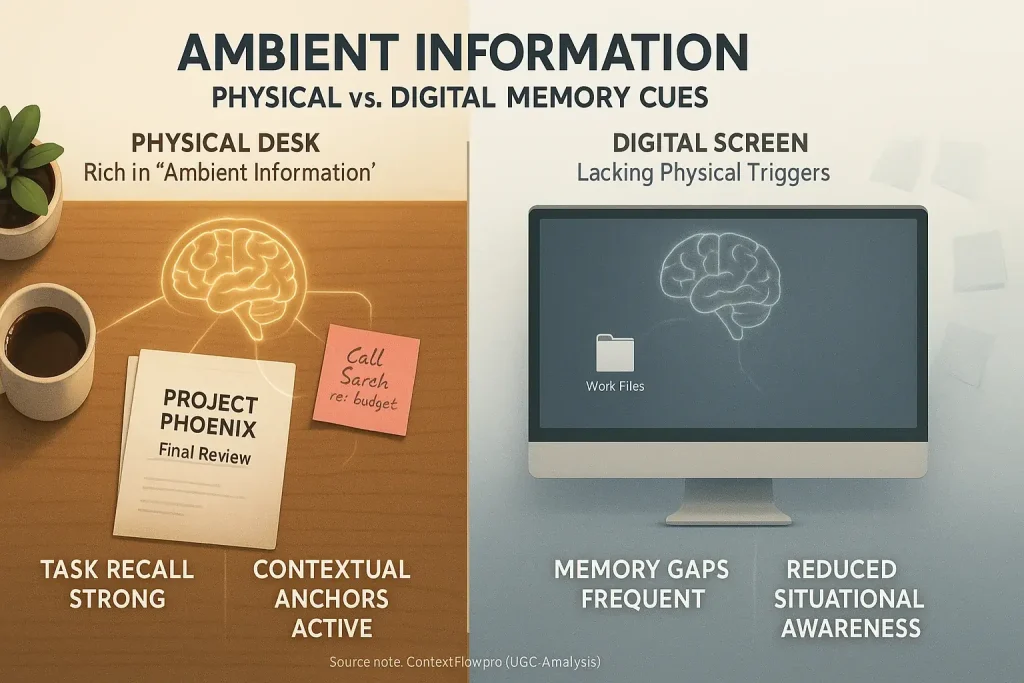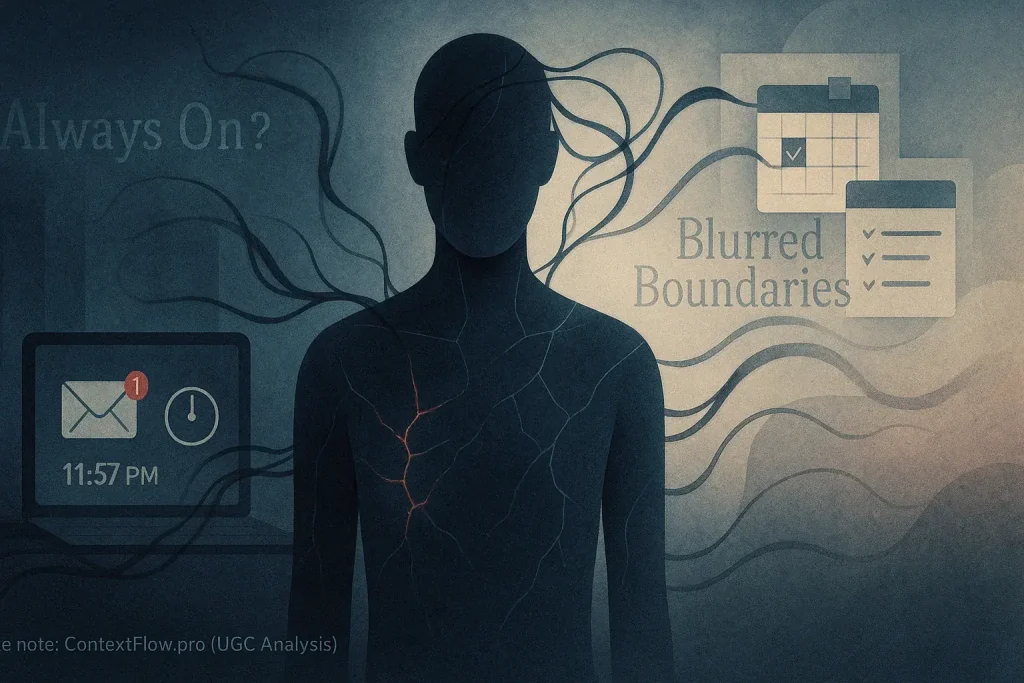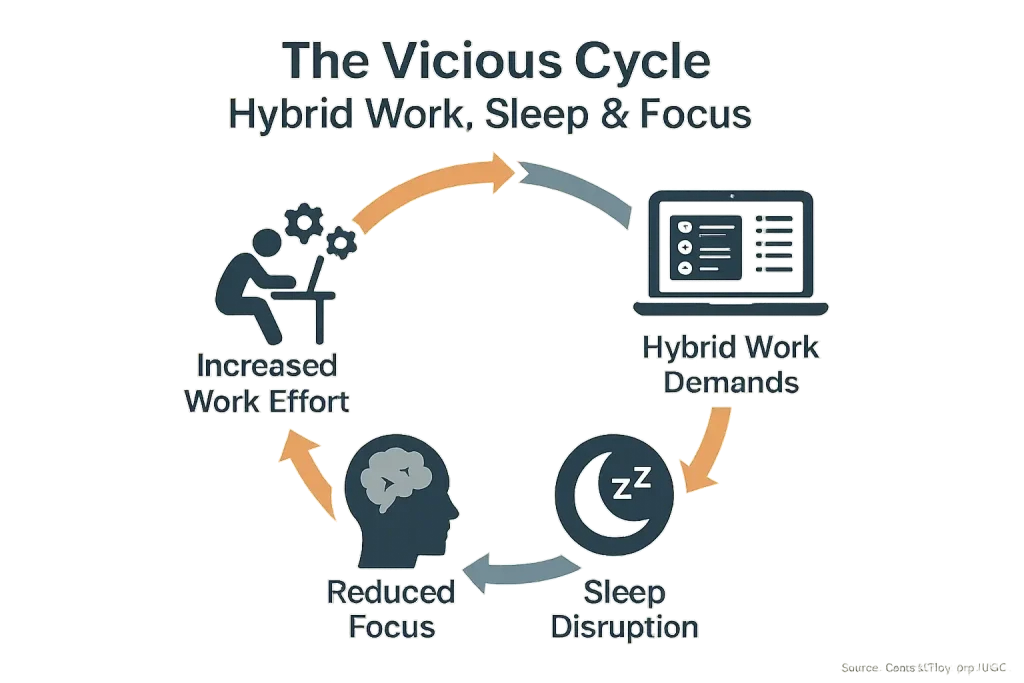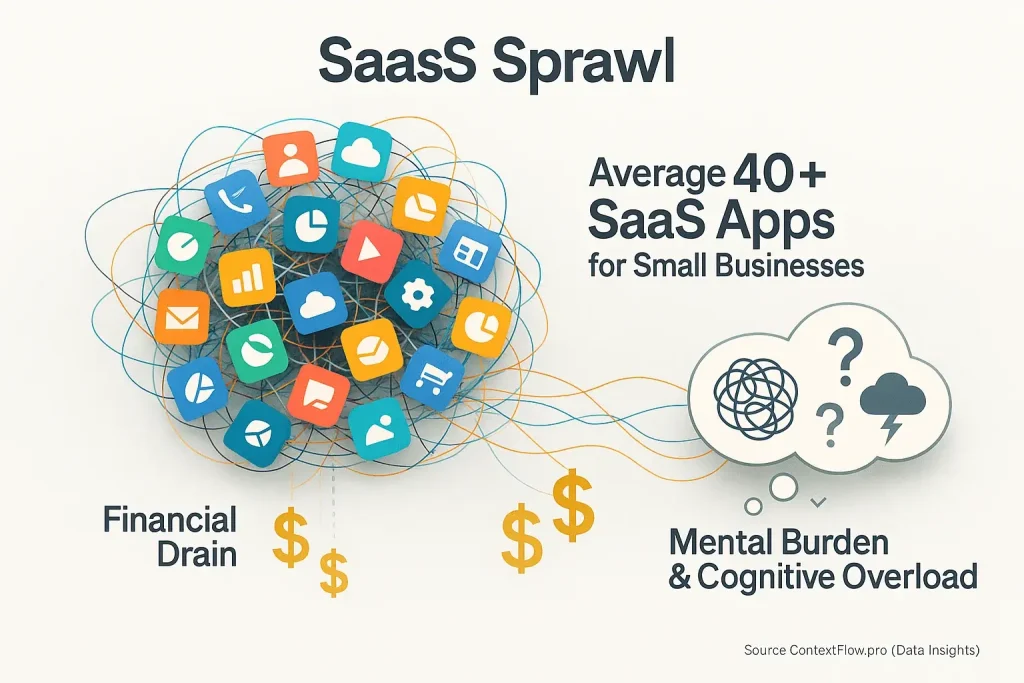Beyond the Hype: Why Less Tech Can Mean More Productivity in Hybrid Work
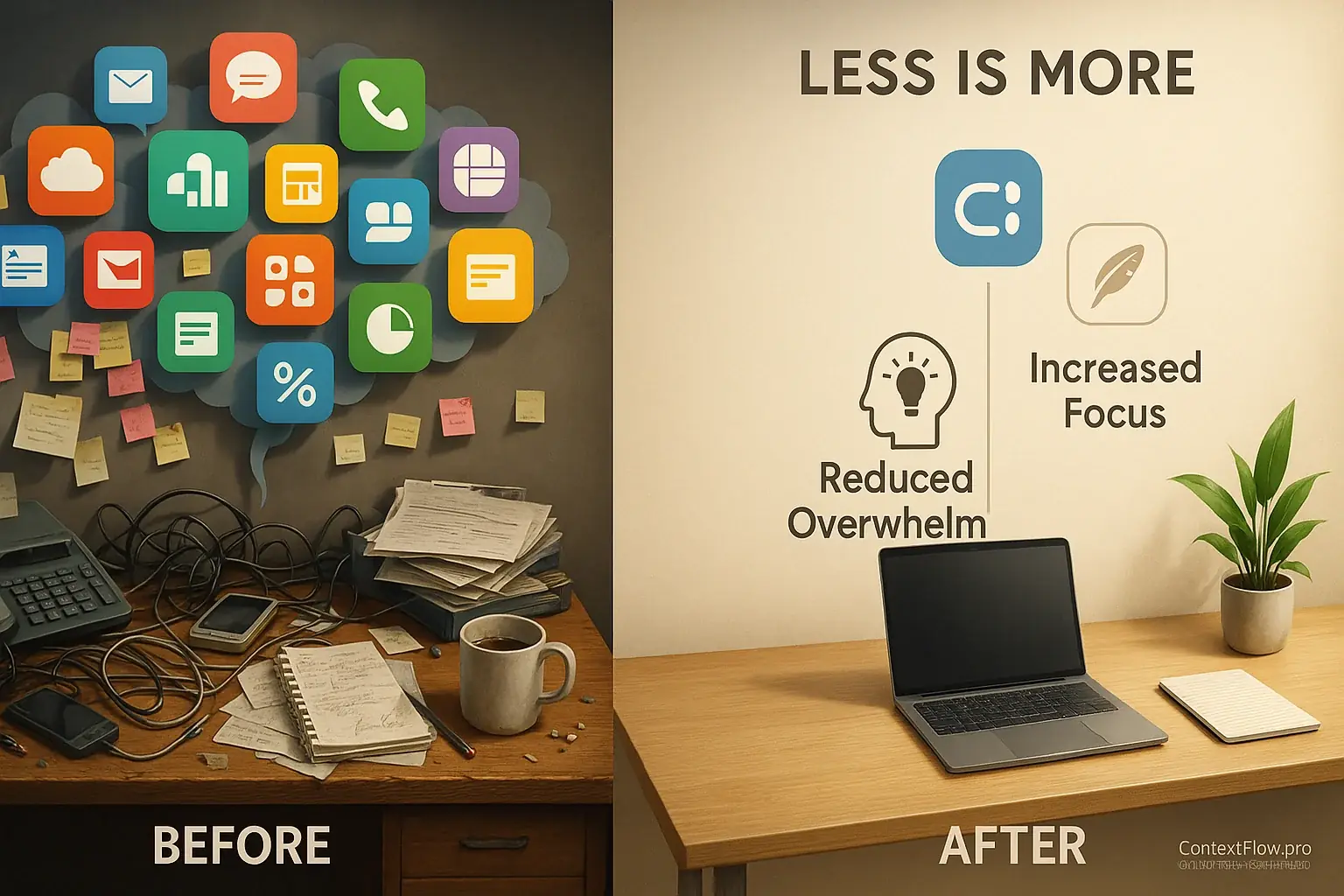
Digital workspace overwhelming? Apps demand attention. A common assumption: more tools equal more productivity. Our user experience analysis suggests a different path. A minimalist hybrid tool stack sharpens focus. It markedly boosts team efficiency.
Tool overload creates new friction. Users consistently report this hidden problem. ContextFlow.pro's research uncovers a clear trend. Individuals deliberately simplifying their tech stacks report transformative results. We've seen countless stories. Users, tired of 'app fatigue', cut digital clutter. Their workdays genuinely improved.
What does this minimalist approach offer? Increased focus is a primary user-reported benefit. Reduced software subscription costs often follow quickly. Onboarding new team members becomes much simpler. This is not about deprivation. It is strategic simplification. Reclaim your workday.
This sounds promising. But does this approach hold up? Real users prove this simplified method succeeds. Daily. Their collective experiences offer powerful, practical lessons. We will share these proven strategies. You can build far smoother hybrid workflows.
Reclaiming Your Focus: How Fewer Tools Lead to Deeper Work
Fewer tools directly reclaim your focus. Your brain resembles a browser with too many open tabs. Each new application adds another tab, constantly fragmenting your attention. Users report a minimalist tool stack markedly reduces this cognitive load. This approach also minimizes disruptive context switching, a major drain on focus.
Users consistently report a significant shift. With less digital clutter, they finally achieve sustained deep work states. This focus allows them to tackle complex tasks without constant digital interruptions. It clears the runway for your best output. One professional, for instance, detailed how consolidating five project management tools into one unified platform cut their deep work completion time in half. A subtle truth often emerges from user experiences. The mere presence of unused application icons can trigger micro-distractions. You don't even need to open them. Minimalism silences that persistent, distracting pull.
Cutting the Fat: How a Minimalist Stack Slashes Hidden Costs

Those monthly software subscriptions do add up, don't they? It is a common pain point. This is classic SaaS sprawl. Our UGC analysis shows it is not only about the direct financial hit. The mental energy spent tracking numerous accounts also creates considerable drag. Adopting a minimalist tool stack directly slashes these hidden costs. Users often report welcome financial relief. They also experience a lighter cognitive burden.
Many users uncover unexpected savings. They discover payment for redundant features. Or entire apps they seldom touch. One freelancer, our data synthesis reveals, realized they were spending over fifty dollars monthly on overlapping services. This occurred because they had not reviewed their stack in years. Here is a quick win. Audit your subscriptions. You will likely uncover 'dead weight' you are carrying. This audit also reduces the mental overhead of managing too many accounts. Fewer accounts. Less stress.
Smooth Sailing: Simplifying Onboarding for New Team Members
Remember that first-day feeling? A dozen new applications. Instant overwhelm. This tool avalanche hinders new hire productivity. It often happens before they even truly start working. A simplified tool stack fundamentally changes this initial experience. Onboarding streamlines significantly. Learning curves flatten. New team members can focus.
Teams embracing minimalist toolsets consistently report tangible benefits. New hires achieve productivity much faster. Our UGC analysis shows less time wrestling complex interfaces directly boosts their contribution. For instance, one manager noted a striking change. Their new project coordinator onboarding time dropped by an impressive 30%. This substantial reduction occurred after consolidating task management and communication tools into one integrated platform. The unspoken truth here involves new hire anxiety. It plummets. They feel competent sooner. Confidence builds from day one, fostering a more positive integration into the team.
The Core Principles: How Users Build Their Minimalist Hybrid Tool Stack
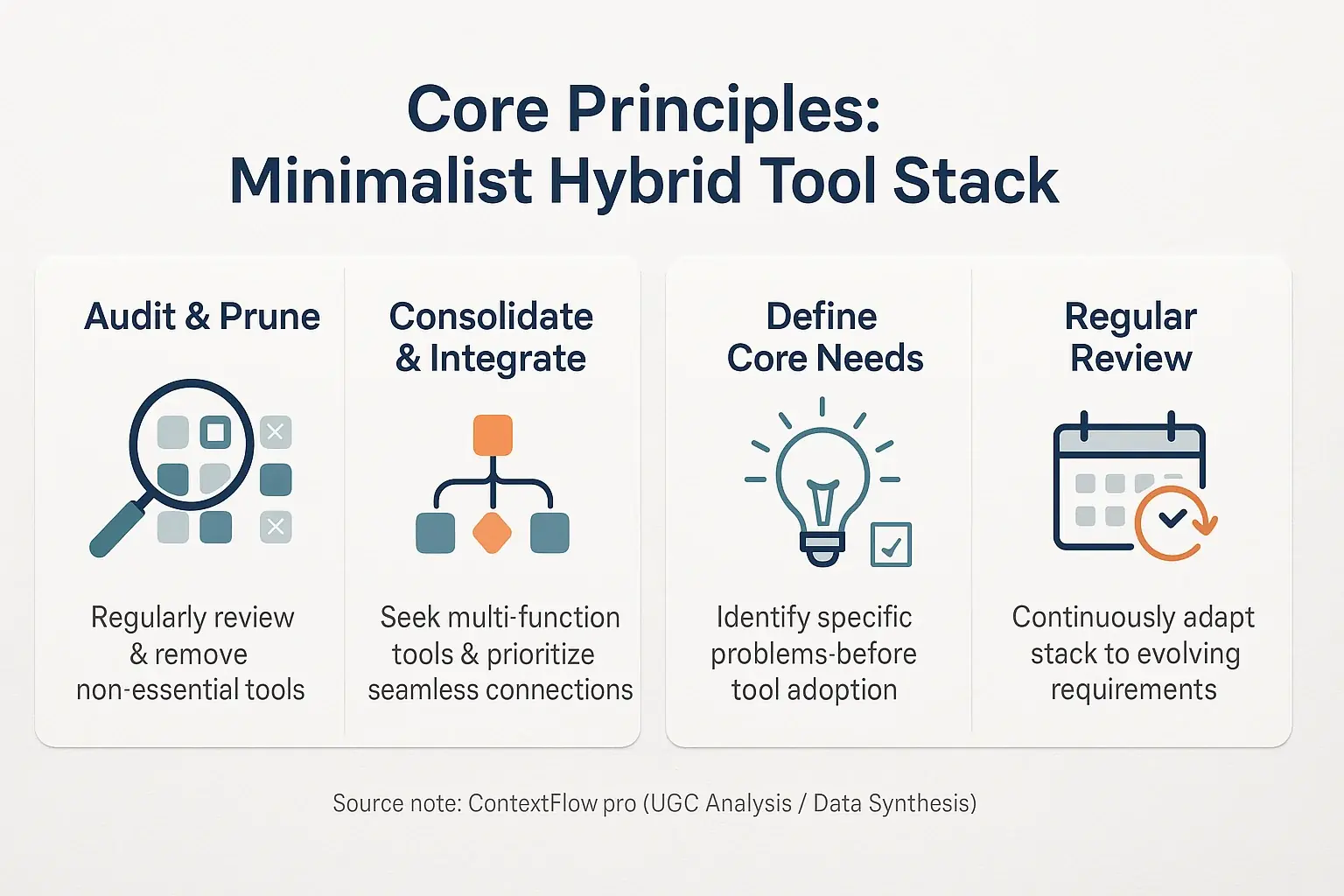
Building a minimalist hybrid tool stack demands intentionality. This goes beyond merely deleting apps. Professionals who succeed adopt a crucial mindset shift. They follow a few core principles for lasting clarity.
Key strategies emerge from consistent user experiences. These form the bedrock of a streamlined digital workspace. Consider these actions:
- Audit & Prune: Regularly review every tool. If it fails to serve a clear, essential purpose, it becomes a candidate for removal. Users often uncover surprising functional overlaps during this process.
- Consolidate & Integrate: Seek tools offering multiple functionalities. Prioritize platforms that integrate seamlessly with each other. The objective: fewer applications, greater interconnectedness. Think 'hub' tools for core tasks.
- Define Core Needs: Clearly identify the specific problem a new tool will solve before adoption. This proactive step helps you avoid 'feature chasing'. Many users report falling into the trap of acquiring tools for novel features, not actual needs.
This process is not a one-time cleanup. Your work requirements evolve. Your tool stack must adapt accordingly. Regular audits maintain a lean, effective setup. Many experienced users share a practical rule. An app untouched for 30 days? It is likely dead weight. Consider archiving or removing it to maintain your focus.
Build Your Minimalist Hybrid Tool Stack: An Interactive Planner
Build Your Minimalist Hybrid Tool Stack
1. How many digital tools (apps, platforms, extensions) do you actively use for work in a typical week?
2. How often do you feel overwhelmed or fatigued by the sheer number of tools you use?
3. Do you have multiple tools that perform similar functions (e.g., two task managers, three communication apps)?
4. How easy is it to transfer information or context between your different work tools?
You have explored your own tool stack. You probably have a clearer picture of where to start simplification. This assessment aids deliberate choices. These choices must serve your unique workflow. Better context flow is the real goal, not merely fewer application icons on your screen.
Remember, simplifying your digital life is a journey. It is not a one-time destination. Start small. Celebrate every uninstalled application; each removal is a win. Watch your focus improve with these changes. You have got this. Revisit our guiding principles or explore other topics on ContextFlow.pro for continued support.

